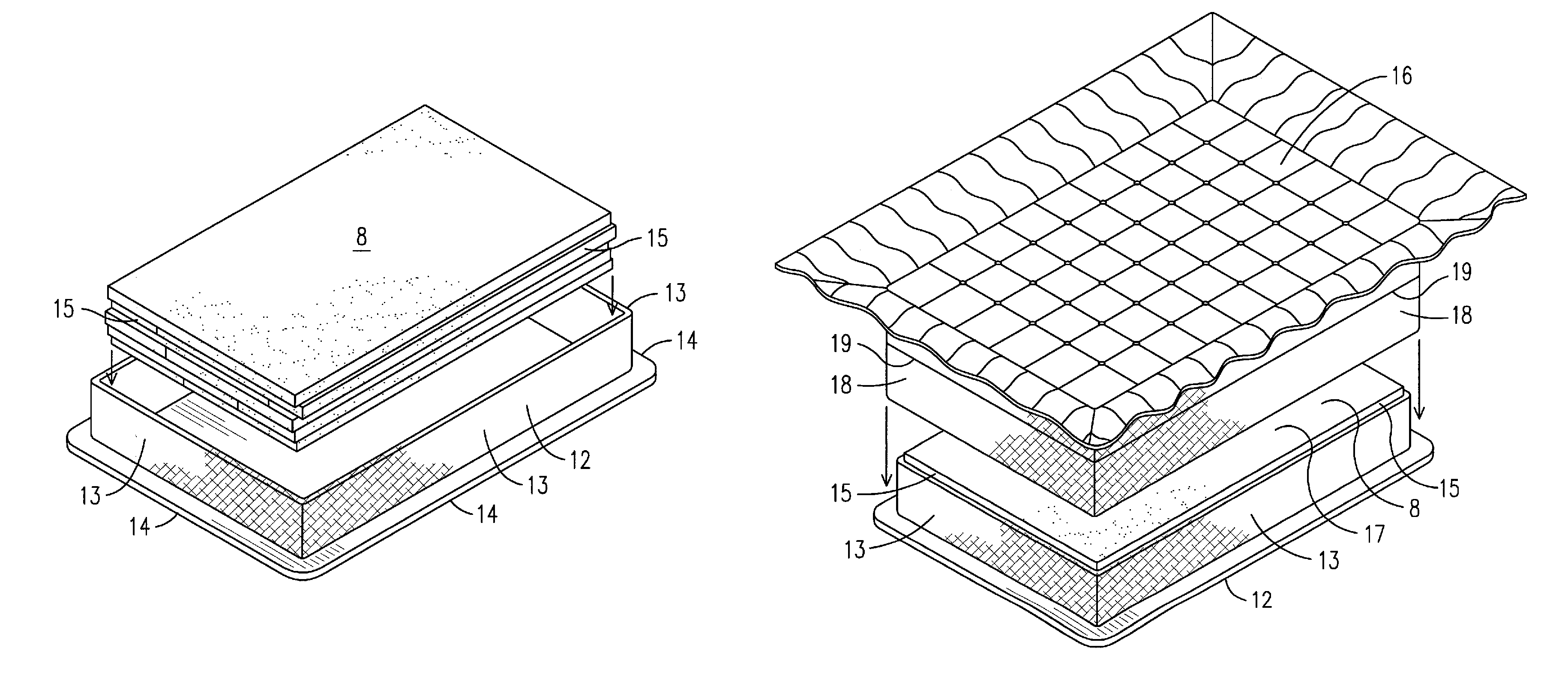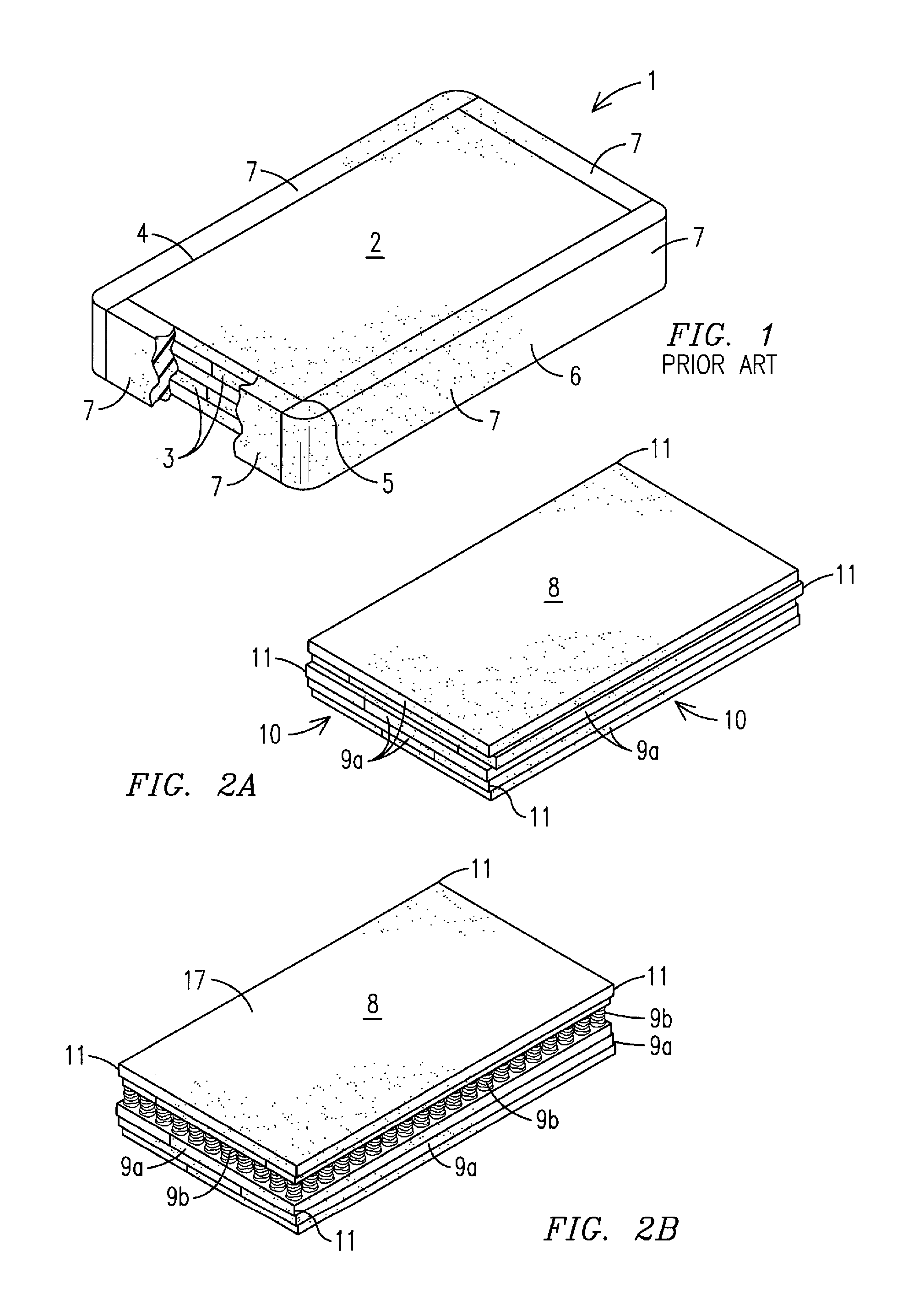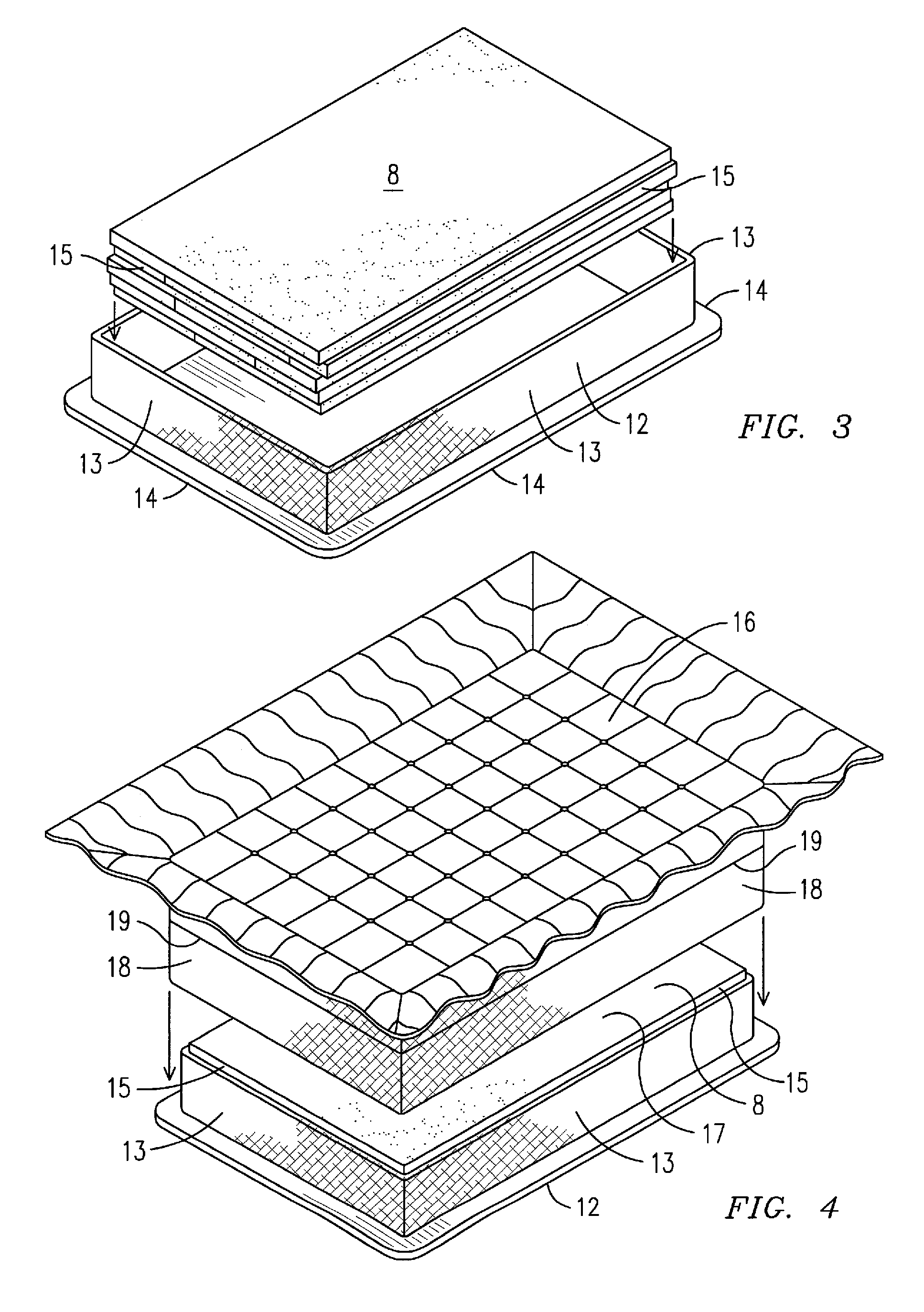Perimeter-wrapped mattress and method of manufacture
a mattress and perimeter edge technology, applied in the field of mattresses, can solve the problems of forming a dense uncomfortable ridge around the perimeter edge of the mattress, flattening the mattress, and failing to provide a sturdy sitting edg
- Summary
- Abstract
- Description
- Claims
- Application Information
AI Technical Summary
Benefits of technology
Problems solved by technology
Method used
Image
Examples
Embodiment Construction
[0027]For purposes of describing the preferred embodiment, the terminology used in reference to the numbered accessories in the drawings is as follows:[0028]1. conventional foam mattress[0029]2. foam core[0030]3. layer of foam[0031]4. edge of foam core[0032]5. corner of foam core[0033]6. foam encasement[0034]7. foam panel[0035]8. foam core[0036]9a. layer of foam[0037]9b. micro-coil spring layer[0038]10. edge of foam core[0039]11. corner of foam core[0040]12. bottom cover[0041]13. bottom flange[0042]14. perimeter of bottom cover[0043]15. side wall of foam core[0044]16. top cover[0045]17. upper surface of foam core[0046]18. top flange[0047]19. perimeter of top cover[0048]20. staple[0049]21. non-woven strip of fabric[0050]22. mattress[0051]23. outer surface of top flange[0052]24. adhesive[0053]25. first end of non-woven strip of fabric[0054]26. second end of non-woven strip of fabric[0055]27. side cover panels
[0056]With reference to FIG. 1, a perspective top partial cutaway view of a c...
PUM
| Property | Measurement | Unit |
|---|---|---|
| perimeter | aaaaa | aaaaa |
| pressure | aaaaa | aaaaa |
| buoyancy | aaaaa | aaaaa |
Abstract
Description
Claims
Application Information
 Login to View More
Login to View More - R&D
- Intellectual Property
- Life Sciences
- Materials
- Tech Scout
- Unparalleled Data Quality
- Higher Quality Content
- 60% Fewer Hallucinations
Browse by: Latest US Patents, China's latest patents, Technical Efficacy Thesaurus, Application Domain, Technology Topic, Popular Technical Reports.
© 2025 PatSnap. All rights reserved.Legal|Privacy policy|Modern Slavery Act Transparency Statement|Sitemap|About US| Contact US: help@patsnap.com



